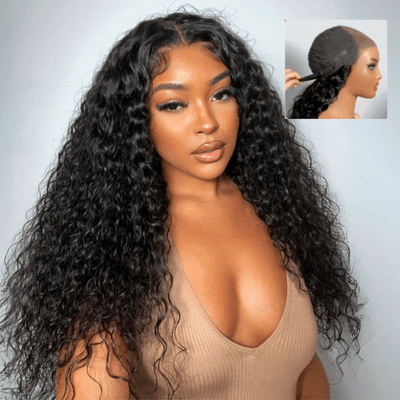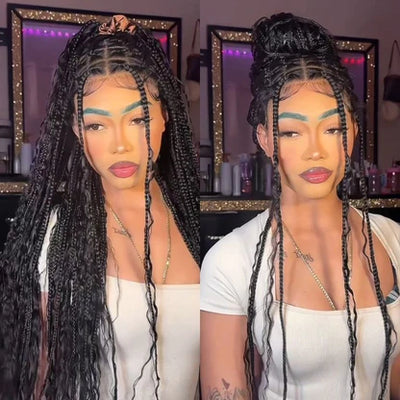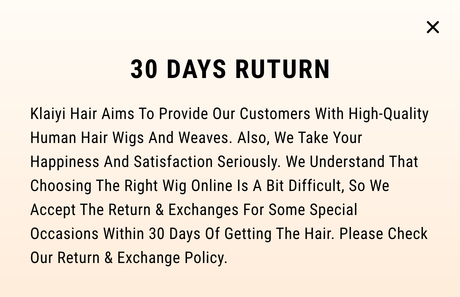Join The Forum To Get inspired Ideas
How To Make Glue Lace Wigs Better
A lace wig is a wig made with a lace base or lace material in the front that mimics the appearance of a natural hairline. The hair strands are hand-tied to the lace base to create a realistic and natural looking hairline. Lace wigs come in a variety of types, including full lace wigs, front lace wigs, and 360 lace wigs, each with a different area of lace coverage.
Lace wigs offer a natural, versatile and comfortable solution for individuals who want to enhance their appearance, experiment with different hairstyles or deal with hair loss.
1.Understanding Lace Wigs and Glue
Understanding lace wigs and the adhesives (such as glue) used to hold them in place is essential to achieving a natural, secure fit. Below is a breakdown of lace wigs and the types of adhesives commonly used:
Types of lace wigs:
Frontal Lace Wigs: these wigs have lace on the front of the wig that extends from ear to ear, creating a natural hairline. The rest of the wig is made of a more durable material.
Full Lace Wigs: these wigs have lace all over the body, allowing for multiple styles and a natural look anywhere on the scalp.
360 Lace Wigs: these wigs have lace around the entire perimeter with a cap in the center, providing the flexibility of a front lace wig and the full coverage of a full lace wig.
Lace Material:
Swiss lace: Swiss lace is thin, soft, and delicate, blending seamlessly into the skin for a natural look.
French Lace: French lace is slightly thicker and more durable than Swiss lace, providing a balance between natural appearance and durability.
HD Lace: HD Lace is ultra-thin and sheer and virtually disappears against the skin for an extremely natural look.
Glue and Adhesive:
Water-based glue: This glue is water-soluble and easier to remove the wig. It is suitable for short-term wear and is gentle on the skin.
Acrylic based glue: Acrylic based glues provide a stronger, longer lasting bond. They are waterproof and suitable for long periods of wear and can last for weeks when applied correctly.
Silicone-based glue: Silicone-based glues provide a strong bond and are known for their flexibility, making them suitable for long-term wear. They are waterproof and provide a natural looking hairline.
2. Prepare your hair and scalp
It is vital to prepare your hair and scalp when wearing a lace wig, especially if you are using adhesives or tapes to secure the wig. Here are some basic steps to prepare your hair and scalp before wearing a lace wig:
1. Cleanse the scalp: Wash your hair with a gentle, sulfate-free shampoo to remove dirt, oil and product buildup. Make sure your scalp is clean and free of residue, which can interfere with wig bonding.
2. Hair Care: Use Moisturizing Conditioner: Use moisturizing conditioner to keep your natural hair hydrated and manageable. Focus on the ends of the hair as they are drier. Rinse thoroughly to avoid residue.
3. Blow dry hair: Air dry your hair or use a low temperature blow dry. Avoid heat as it can damage the hair. Make sure hair is completely dry before applying any adhesives or tapes.
4. Protect your hair: If you have long hair, neatly braid, twist or wrap your hair around your head and secure it with bobby pins. Then wear a wig cap to flatten your hair. If you have short hair, you can just use a wig cap.
5. Preparing the scalp: Cleanse the scalp with an astringent containing alcohol or witch hazel to remove oil. This step helps the adhesive to bond better with the skin. Apply a scalp protector (liquid or gel) to the skin where the lace is to be worn. This creates a barrier between the skin and the adhesive, protecting the skin and improving the bond. Allow the Scalp Protector to dry completely before applying the adhesive. Most scalp protectors turn clear when dry.
6. Avoid sweat and oil: Avoid Excessive Sweating: Try to stay cool and avoid activities that cause excessive sweating before and after wearing the wig. Sweat can weaken the adhesive bond. Minimize the use of oily products: Avoid using oily or greasy hair care products before wearing the wig. These products can damage the adhesive and affect the longevity of the bond.
3.Apply the glue: Step-by-step guide
Applying lace wig glue requires precision and patience to ensure a strong and natural fit. Here's a step-by-step guide to help you apply the glue correctly:
Step 1: Gather supplies: Lace Wig Lace wig glue (water-based, acrylic-based or silicone-based) Scalp protector Applicator brush or disposable applicator stick Hair clips or wig caps Alcohol or witch hazel for cleaning Cotton swabs or pads for cleaning.
Step 2: Prepare hair and scalp: Cleanse the scalp with alcohol or witch hazel to remove oil and residue. Apply a scalp protector along the hairline and leave it to dry completely. This will create a barrier between the skin and the glue.
Step 3: Apply the glue: Start applying the glue from the center of your forehead and work your way towards your temples. Use an applicator brush or disposable applicator stick to apply a thin, even layer of glue. Avoid getting glue on your hair or eyebrows.
Apply glue in thin layers. Multiple thin layers work better than one thick layer. Each layer dries before the next is applied. Most glues turn clear when you're ready to apply the next layer. Pay special attention to the edges to make sure the lace sits flat against the skin. You can use the end of an applicator stick to gently press the lace into the glue. Do not apply glue directly to the hairline. Leave a little space between the glue and your natural hairline to prevent hair damage.
Step 4: Attach the wig: After applying the desired number of layers of glue, wait for the glue to stick. This usually takes a few minutes. Gently pat the glue with your fingers - if it feels sticky but not wet, the glue is sticking. Carefully place the lace wig on your head, starting at the center of your forehead.
Press the lace into the sticky glue, starting at the center and working outward. Use a comb or your fingertips to press the lace firmly into the glue to ensure a secure bond. Adjust the wig to align it with your natural hairline and smooth out any air bubbles or creases in the lace. Move gently to avoid stretching or tearing the lace.
Step 5: Secure and style: If desired, use clips to secure the edges of the wig after the glue is completely dry. This helps to maintain a strong bond while the glue dries completely.
4.How to care for your glued lace wig
Caring for your glued lace wig is essential to maintaining the longevity and appearance of your wig as well as the health of your natural hair and scalp. Here are some tips on how to care for your glued lace wig:
1. Cleanse regularly: Use a mild, sulfate-free shampoo to clean your scalp regularly. Dilute the shampoo with water to create a mild solution. Avoid applying shampoo directly to the lace to prevent the adhesive from loosening. While it is important to keep your scalp clean, avoid over-washing as it can weaken the adhesive. Follow a regular washing schedule recommended by your hair stylist or wig expert.
2. Gentle combing: To prevent tangles and breakage, gently comb your wig with a wide-toothed comb or your fingers. Start with the tips and work your way down to the roots. Comb the wig before washing to make the washing process more manageable and prevent additional tangling.
3. Proper styling: Move gently when styling a lace wig to avoid pulling on the lace or bonded areas. Excessive pulling can loosen the wig or cause damage. If you plan to use a heat styling tool, set it to a medium-low heat setting to prevent damage to the wig fibers. Use a heat protection spray before styling.
4. Protect your hairline: Avoid applying glue directly to your natural hairline whenever possible. This prevents unnecessary stress on your hair and promotes a healthy scalp. Give your hairline a rest between wigs. Avoid continuous, prolonged use to allow the scalp and hairline to breathe and recover.
5. Remove correctly: When it is time to remove your wig, use a high quality lace wig adhesive remover. Use the remover according to the manufacturer's instructions and gently dissolve the adhesive. Take your time during the removal process to avoid pulling or damaging the lace or your natural hair.
6.Storage and Maintenance: When not in use, store your lace wig on a wig stand or mannequin head to maintain its shape and prevent tangling. Store the wig away from direct sunlight to prevent fading. Check your wig regularly for any signs of wear and tear, such as thinning areas or loose lace. Resolve any problems promptly to extend the life of your wig.
7. Professional Repair: If you are unsure about the condition of your self-adhesive lace wig, consider scheduling regular inspections with a professional wig specialist or hair stylist. They can assess the condition of the wig and make any necessary adjustments or repairs.
5. 10 Common mistakes in glued lace wig
When dealing with glued lace wigs, people often make mistakes that can affect the appearance and longevity of the wig as well as the health of the natural hair and scalp. Here are some of the mistakes and tips for solving:
1 Using too much glue can lead to messy application, difficult cleaning and a less natural appearance.
Solution: Apply adhesive in thin, even layers. Multiple thin layers provide a stronger and more natural bond than one thick layer.
2 Failure to keep the scalp clean and healthy can cause irritation and weaken the bond.
Solution: Regularly clean the scalp with alcohol or a scalp protector before wearing a wig. Follow a proper scalp care program to maintain a healthy environment for wig attachments.
3 Rushing the removal process or using too much force may damage the lace and your natural hair.
Solution: Use a high quality lace wig adhesive remover and follow the manufacturer's instructions. Be patient and gentle during the removal process to avoid any damage.
4 Installing a wig before the adhesive becomes tacky may result in a weak bond and application mess.
Solution: Wait until each layer of adhesive has become tacky before attaching the wig. Patience is essential for a strong bond.
5 An improperly positioned wig may look unnatural and may not match your natural hairline.
Solution: Take the time to place your wig correctly. Align it with your natural hairline and carefully adjust for a seamless blend.
6 Itchy or irritated scalp
Solution: If you experience itching or irritation, clean your scalp thoroughly with alcohol or a mild scalp cleanser. If the problem persists, consider using a hypoallergenic adhesive or consult a dermatologist.
7 Visible lace
Solution: To make lace less visible, consider applying a tinted foundation or concealer along the hairline that matches your skin tone. Be careful not to stain the wig's hair.
8 Shifting wigs
Solution: If the wig shifts during wear, consider using wig clips or combs inside the wig for added security. Adjust the position of the clips to ensure a tight fit.
9 Damaged lace
Solution: Repair small tears in the lace using a clear adhesive designed specifically for lace wigs. For severe damage, consider consulting a professional wig expert for repair or replacement.
Conclusion
In conclusion, wearing a glued lace wig can be a transformative, confidence-boosting experience that offers natural solutions for a variety of hair needs and preferences. However, getting the perfect look and maintaining the longevity of your wig requires proper preparation, use and care.
Understanding the different types of lace wigs, choosing the right adhesive and following proper application techniques are fundamental. In addition, understanding common mistakes and troubleshooting tips can help you overcome challenges that may arise during wear and care.

























